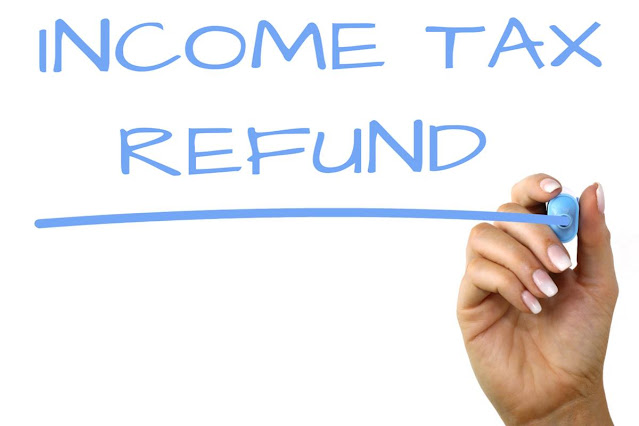Where’s My Refund is a common question that many taxpayers ask after filing their tax returns. Whether they are expecting a refund or owe taxes, they want to know the status of their tax return and when they will receive their payment or notice.
In this article, we will explain what Where’s My Refund is, how it works, and how to use it to track your tax refund status. We will also provide some tips and tricks to speed up your refund process and avoid common issues and delays. We will also answer some frequently asked questions (FAQ) about “Where’s My Refund?” and tax refunds in general.
By the end of this article, you will have a clear understanding of how to use “Where’s My Refund?” to check your tax refund status and get your money faster. 😊
How to Get the Best Auto Insurance Quotes Online.
How to Find the Best Life Insurance Quotes Online.
Top Car Insurance Add-Ons You Should Consider for Your Car.
Where’s My Refund? A Complete Guide to Tracking Your Tax Refund Status
Tax refunds are payments that the government makes to taxpayers who have paid more taxes than they owe. Tax refunds can be issued by direct deposit, paper check, or prepaid debit card. Tax refunds can vary depending on various factors, such as income, deductions, credits, filing status, and withholding.
Many taxpayers look forward to receiving their tax refunds as soon as possible after filing their tax returns. However, sometimes they may experience delays or errors in their refund process. That’s why the IRS provides a tool called “Where’s My Refund?” that allows taxpayers to check the status of their tax refunds online or by phone.
What is “Where’s My Refund?” and How Does It Work?
“Where’s My Refund?” is an online tool that the IRS offers on its website 1 or through its mobile app IRS2Go 2. It allows taxpayers to check the status of their federal tax refunds 24/7. It also provides information on the expected refund date and the reason for any refund delay.
To use “Where’s My Refund?”, taxpayers need to enter three pieces of information:
- Their Social Security number or Individual Taxpayer Identification Number (ITIN)
- Their filing status (single, married filing jointly, etc.)
- The exact amount of their refund as shown on their tax return
The tool then displays one of three messages:
- Return Received: This means that the IRS has received your tax return and is processing it.
- Refund Approved: This means that the IRS has approved your refund and is preparing to send it to you.
- Refund Sent: This means that the IRS has sent your refund to your bank account or by mail.
The tool also provides an estimated date for when you can expect to receive your refund. However, this date is not guaranteed and may change depending on various factors.
The IRS updates “Where’s My Refund?” once a day, usually overnight. Therefore, there is no need to check it more than once a day. The IRS also advises taxpayers not to call them unless the tool directs them to do so.
How Long Does It Take to Get Your Tax Refund?
The time it takes to get your tax refund depends on how and when you file your tax return. Generally, the IRS issues most refunds within 21 days of receiving your tax return. However, some refunds may take longer due to errors, fraud prevention, or additional review.
The fastest way to get your tax refund is to file your tax return electronically and choose direct deposit as your payment method. E-filing is more accurate, secure, and convenient than paper filing. Direct deposit is safer, faster, and easier than receiving a paper check or a prepaid debit card.
According to the IRS, you can start checking your refund status within 24 hours after e-filing your tax return or four weeks after mailing a paper return. However, some taxpayers may experience delays in receiving their refunds due to various reasons.
Some of the common reasons for refund delays are:
- Claiming certain credits: If you claim the Earned Income Tax Credit (EITC) or the Additional Child Tax Credit (ACTC), the IRS cannot issue your refund before mid-February by law. This is to prevent fraud and ensure accuracy.
- Filing an incomplete or inaccurate return: If you make mistakes or omit information on your tax return, the IRS may need more time to verify and correct your data. This may result in delays or adjustments in your refund amount.
- Being a victim of identity theft: If someone uses your personal information to file a fraudulent tax return and claim a refund in your name, the IRS may freeze your account until they resolve the issue. This may take several months or longer.
- Having a large or unusual refund: If you request a refund that is significantly higher or lower than your previous refunds, the IRS may need more time to review your return and verify your eligibility. This may trigger an audit or a notice.
- Having unpaid debts: If you owe federal or state taxes, child support, student loans, or other debts, the IRS may reduce or offset your refund to pay them. This may result in a smaller or no refund.
To avoid or minimize refund delays, you should:
- File your tax return as early as possible
- File your tax return electronically and choose direct deposit
- Review your tax return carefully and double-check your information
- Use the correct filing status, deductions, credits, and income
- Respond to any IRS notices or requests promptly
- Protect your personal information and identity
Tips and Tricks to Speed Up Your Refund Process
If you want to get your tax refund faster, here are some tips and tricks that you can follow:
- File your tax return as soon as you have all the necessary documents, such as W-2s, 1099s, receipts, etc. The earlier you file, the earlier you get your refund.
- File your tax return electronically and choose direct deposit. E-filing is faster, more accurate, and more secure than paper filing. Direct deposit is the quickest way to receive your refund and avoid mail delays or theft.
- Use tax software or a tax professional to prepare your tax return. Tax software can help you file your tax return accurately and easily. It can also help you find deductions and credits that you may qualify for. A tax professional can help you file your tax return correctly and efficiently. They can also help you deal with any tax issues or questions that you may have.
- Adjust your withholding or make estimated tax payments. If you receive a large refund every year, it means that you are paying too much taxes throughout the year. You can adjust your withholding by filling out a new Form W-4 with your employer. This way, you can keep more of your money in each paycheck and reduce your refund amount. Alternatively, if you are self-employed or have other sources of income, you can make estimated tax payments throughout the year to avoid underpaying taxes and penalties. This way, you can reduce your tax liability and get a smaller or no refund.
- Track your refund status using “Where’s My Refund?”. You can use the online tool or the mobile app to check the status of your refund 24/7. You can also sign up for email or text alerts to get updates on your refund progress.
Frequently Asked Questions (FAQ) About Where’s My Refund? and Tax Refunds
Here are some of the most common questions that taxpayers have about “Where’s My Refund?” and tax refunds:
Q: What if I don’t have a computer or a smartphone? How can I check my refund status?
A: If you don’t have access to a computer or a smartphone, you can still check your refund status by calling the IRS Refund Hotline at 800-829-1954. You will need to provide the same information as on “Where’s My Refund?”, such as your Social Security number, filing status, and refund amount.
Q: What if I filed an amended tax return? How can I check my amended refund status?
A: If you filed an amended tax return using Form 1040-X, you cannot use “Where’s My Refund?” to check your amended refund status. Instead, you need to use “Where’s My Amended Return?” on the IRS website 3 or by calling 866-464-2050. You will need to provide your Social Security number, date of birth, and zip code.
Q: What if I filed a joint tax return? How can I check my joint refund status?
A: If you filed a joint tax return with your spouse, you can use either spouse’s Social Security number to check your joint refund status on “Where’s My Refund?”. However, only one spouse needs to sign up for email or text alerts.
Q: What if I moved after filing my tax return? How can I update my address?
A: If you moved after filing your tax return and requested a paper check or a prepaid debit card, you need to update your address with the IRS as soon as possible. You can update your address online using the Change of Address tool 4 on the IRS website or by calling 800-829-1040. You can also update your address by filling out Form 8822 5 and mailing it to the IRS.
Q: What if I lost my paper check or prepaid debit card? How can I replace it?
A: If you lost your paper check or prepaid debit card, you need to contact the IRS as soon as possible to request a replacement. You can call 800-829-1954 for paper checks or 800-240-8100





.png)

